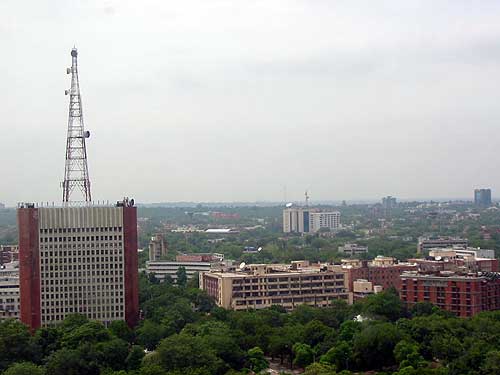All India Radio adapting strategy

All India Radio (AIR) Headquarters in Dehli, India. Photo source: Wikimedia.
Many thanks to SWLing Post reader, Mike R, for sharing this article from Asia Radio Today:
During a session on Public Service Broadcasting (PSB) at Radio Asia, Fayyaz Sheheryar the Director General of All India Radio said all PSB [Public Service] broadcasters are facing the question of how to make revenue within the public service model.
As governments are reducing funding for public service broadcasters, "there is competition between hedonism and altruism," he said.
"If we want to earn money would it be at the expense of ethics? This is a question that requires everyone's attention."
The expansion of tv channels in India overshadowed radio for a while, but radio has come back to life "thanks to the deregulation of radio, new licences and new frequencies on FM and DAB" according to Sheheryar.
All India Radio has introduced new channels to compete with the new private commercial channels.
But, like other public broadcasters else where in the world, All India Radio is "facing questioning from commercial broadcasters about our role."
["]In India, All India Radio is allowed to take advertising, but advertising is not allowed to affect decisions on program content. It is heavily used by advertisers to reach both educated and mass rural populations, but the new private channels have taken a share of the pubic service broadcaster's significant ad revenue.
"Public service broadcasting is a keystone of democracy," said Sheheryar.
"Should we leave it to the market to decide the content of PSB? PSB gently leads the masses to more mature values and services all sectors of the population regardless of whether the have money to spend or not. Ratings cannot be the sole yardstick to measure the success of PSB.
["]"The proliferation of private broadcasters has also contributed to the questioning of PSB's role."
["]The question of how to fund AIR now that it is autonomous is constantly being discussed. All India Radio uses a "hybrid model of funding" with some government funding and some commercial revenue funding. Other sources of revenue are program sales, news media sales, facilities hire and transmission rental.
Despite the philosophical and revenue challenges Sheheryar is optimistic: "Public Service Broadcasting is on a revival course despite all the challenges. The [Indian] Prime Minister's choice to broadcast regularly on AIR has helped us" For PBS to survive it must be recognised as a creative art and treated accordingly."